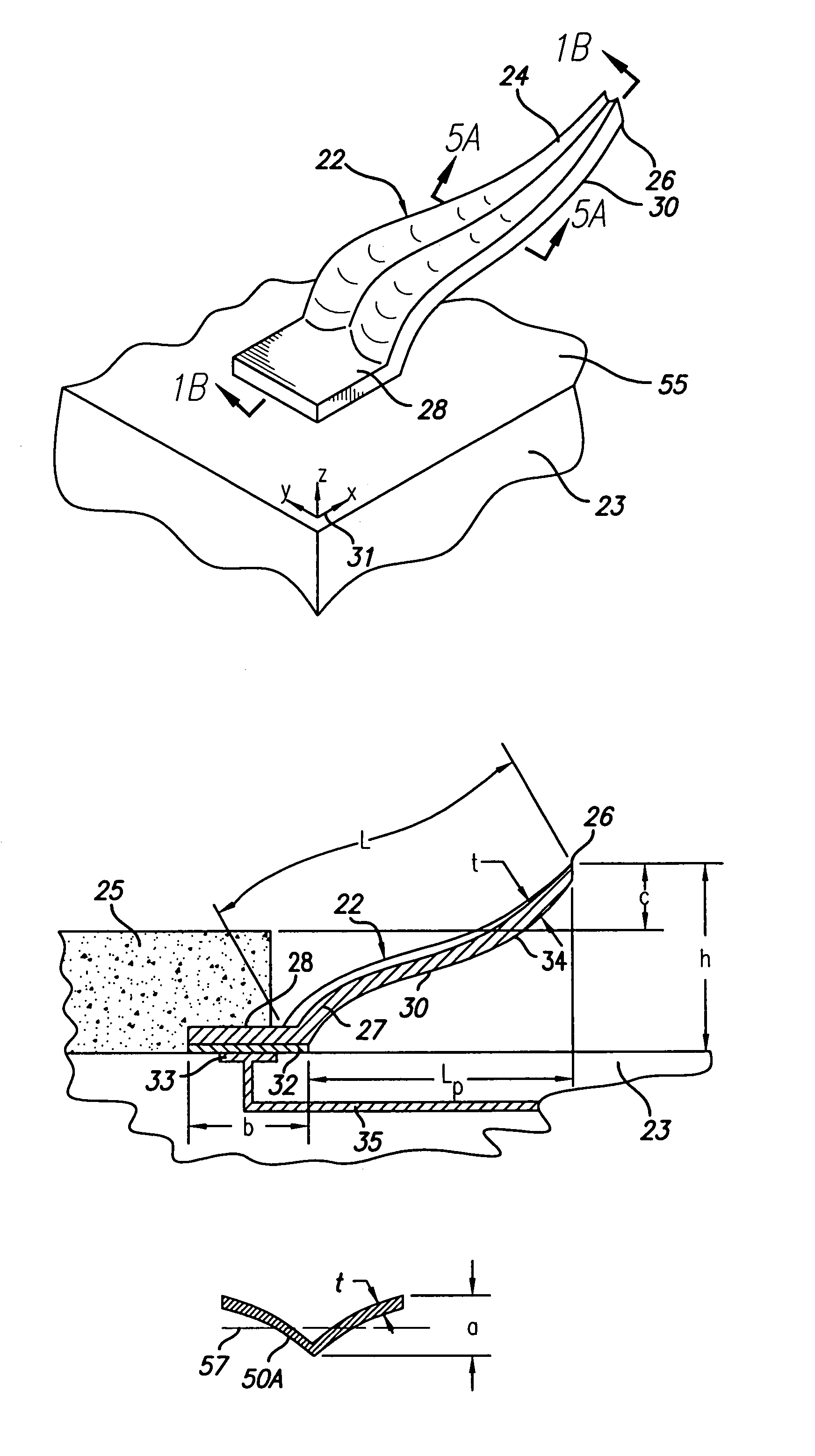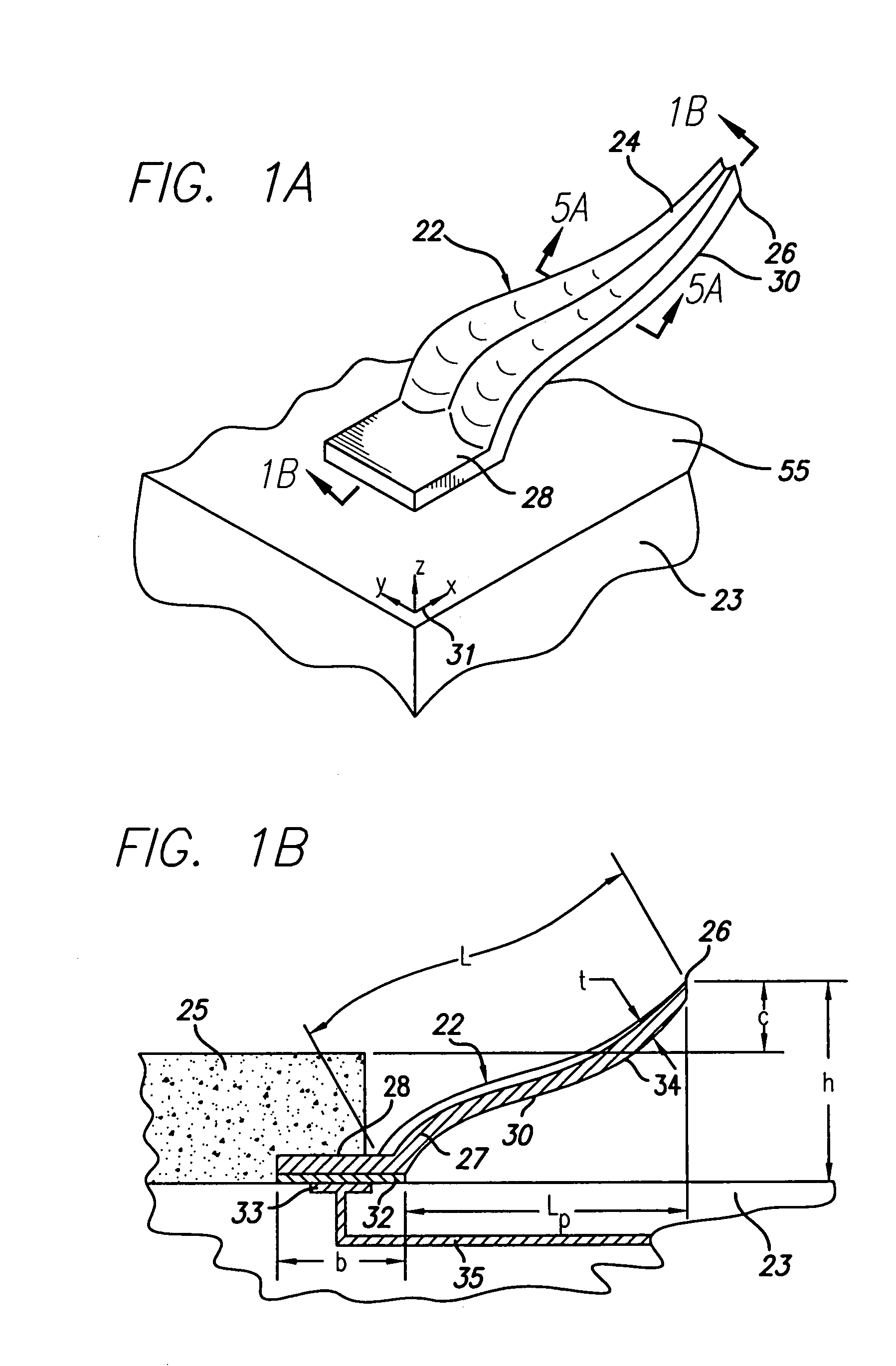Lithographic type microelectronic spring structures with improved contours
a micro-electronic spring and contour technology, applied in the field of electric contact elements, can solve the problems of difficult to achieve the desired contact force, high manufacturing cost associated with manufacturing equipment and process time, and limited application range of fine-pitch spring contacts, etc., to achieve the effect of reducing the number of processing steps, and increasing the spring for
- Summary
- Abstract
- Description
- Claims
- Application Information
AI Technical Summary
Benefits of technology
Problems solved by technology
Method used
Image
Examples
Embodiment Construction
[0050]The present invention satisfies the need for microelectronic spring structure, that overcomes the limitations of prior art spring contacts. In the detailed description that follows, like element numerals are used to describe like elements illustrated in one or more figures. Various terms and acronyms are used throughout the detailed description, including the following:
[0051]“Area moment of inertia,” sometimes denoted as “I,” is a section property defined as the integral of the section area times the distance from the neutral bending axis squared, that is:
∫z2dA
where z is the distance from the neutral axis of bending and dA is an element of the area being integrated. For example, for a rectangular cross-section having a width “w”, a thickness “t,” and a neutral axis through its centroid (½t) on the y-axis at z=0, the area moment of inertia is wt3 / 12.
[0052]“Contour,” when used as a verb, means to form a curved surface. When used as a noun, “contour” means a curved line defined ...
PUM
| Property | Measurement | Unit |
|---|---|---|
| height | aaaaa | aaaaa |
| height | aaaaa | aaaaa |
| width | aaaaa | aaaaa |
Abstract
Description
Claims
Application Information
 Login to View More
Login to View More - R&D
- Intellectual Property
- Life Sciences
- Materials
- Tech Scout
- Unparalleled Data Quality
- Higher Quality Content
- 60% Fewer Hallucinations
Browse by: Latest US Patents, China's latest patents, Technical Efficacy Thesaurus, Application Domain, Technology Topic, Popular Technical Reports.
© 2025 PatSnap. All rights reserved.Legal|Privacy policy|Modern Slavery Act Transparency Statement|Sitemap|About US| Contact US: help@patsnap.com



